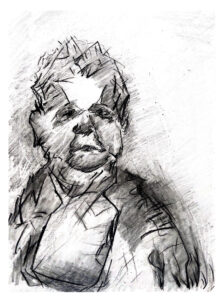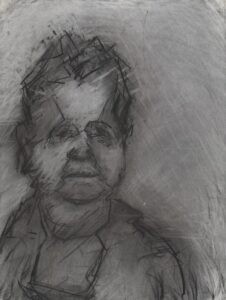Week 3 Human
In week3, I explored the painting styles of three artists and their use of technology in their paintings. Through copying and searching, I applied their painting styles to the museums and botanical gardens I photographed.
Philip Guston
Philip Guston (pronounced like “rust”), born Phillip Goldstein (June 27, 1913 – June 7, 1980), was a painter and printmaker in the New York School, an art movement that included many abstract expressionists like Jackson Pollock and Willem de Kooning. In the late 1960s, Guston helped to lead a transition from abstract expressionism to neo-expressionism in painting, abandoning so-called “pure abstraction” in favour of more representational, cartoonish renderings of various personal situations, symbols and objects.
In the demonstration of a woman’s body into an art form, Philip Guston used charcoal to show the feminine body, such as curly, overlapping lines in its sketching.
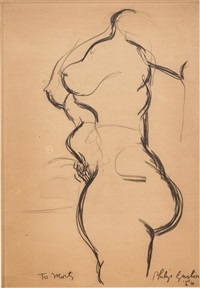
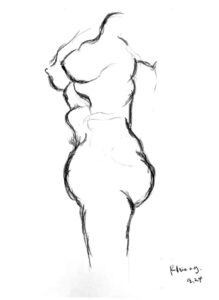
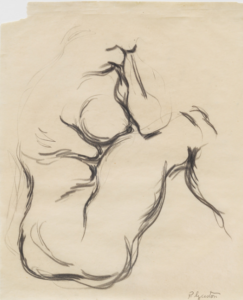

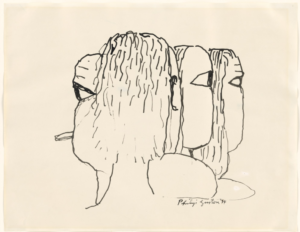
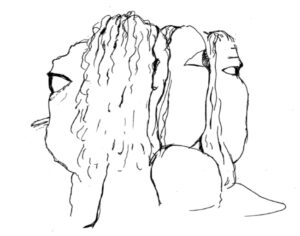
Charles Sheeler
Charles Sheeler (American, Philadelphia, Pennsylvania 1883–1965 Dobbs Ferry, New York)
Sheeler painted using a technique that complemented his photography. He was a self-proclaimed Precisionist, a term that emphasized the linear precision he employed in his depictions. As in his photographic works, his subjects were generally material things such as machinery and structures. He was hired by Ford Motor Co. to photograph and make paintings of their factories.
Delmonico Building
Delmonico’s was a fabled restaurant and meeting place for New York City’s upper classes in the late nineteenth and early twentieth centuries.It closed its location in 1923 and reopened at a new address in 1926. New Delmonico was designed in an Italian Renaissance revival style by the architect H. Craig Severance. However, the building has been not satisfied, whether it’s form, structure or scale.
Sheeler based on a photograph to make this sketching in1926, which forced the viewer ‘look’ upward with the artist. Sheeler extracted abstract patterns from his realistic depiction of the urban landscape. He used lithograph as a demonstration of the art form.
It can be seen that the building is “setbacks” on the upper stories, in order to allow light to reach the streets below. The other element with the order in this sketching is an arrangement of diagonals and angles for its perspective. The Delmonico Building dwarfs the older, more modestly scaled structures that share its city block, and its blank side exteriors indicate where adjacent buildings have been demolished or where.
Pencil with different hardness is used in my sketching, performing the mass and void, light and darkness, and perspective consideration in it.
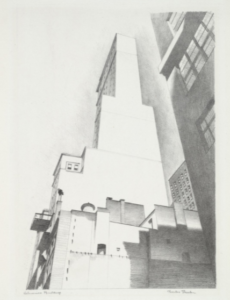
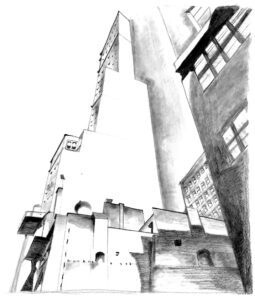
In Steelers sketchings and paintings, The overall perspective of sketching always be demonstrated in an interesting way, such as in photographs 1 and photograph 3, which used the three-point perspective to lead people to feel the scale between building and the human body.
The excellent use of light and shadow can be seen in each sketch, for instance, their windows with colours of different depths and the relationships of darkness and lighting between buildings.
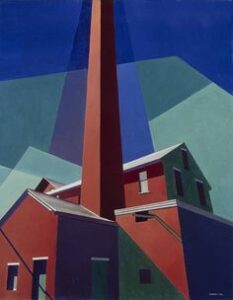
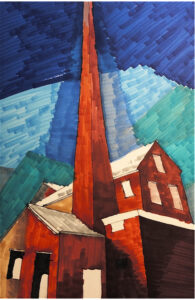
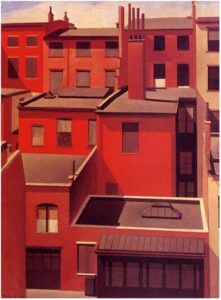
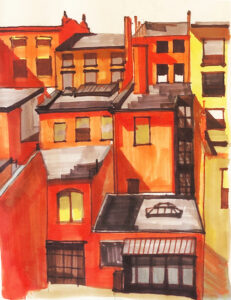
Uche Okeke
Uche Okeke was a Nigerian Postwar & Contemporary artist who was born in 1933.
An Igbo family living in northern Nigeria, Okeke’s curiosity about his own culture was whetted by Igbo tales told by his mother and sister, by his secondary school education in the Igbo region, and later by the discovery that his mother had been an uli artist.
Okeke’s early work ranged from pen and ink portraits to wondrous figures rendered in pen and ink and based upon Igbo tales, to a series of images rendered in gouache that was published in Tales of Land of Death (1971).
He has created images of Igbo spirits, mythic figures, and masqueraders in various media. A scene from Chinua Achebe’s famous novel Things Fall Apart was illustrated in oil paint, as was a scene of Igbo women demonstrating during the 1929 Aba Riots in south-eastern Nigeria.

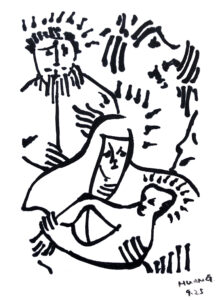
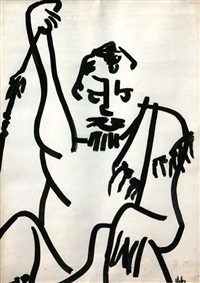
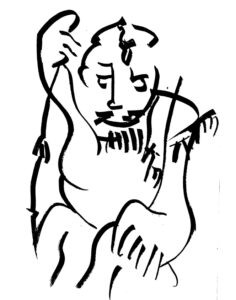

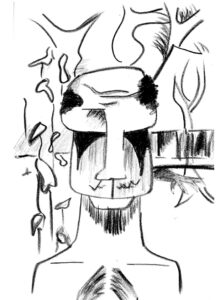
Works from Museum
The first object is created in Okeke’s style, In this sculpture, I have used Okeke’s minimalist style, which focuses on the form of the sculpture and the facial expression of the figure. The characteristic features are the lines of Okeke’s facial expressions and the religious lines on the head.
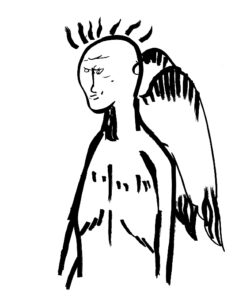
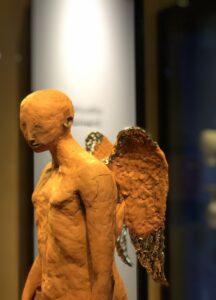
This large giraffe model reminds me of Charles Sheeler’s three-point perspective, with its colour scheme. I have applied the colours of the background in the drawing and the subject giraffe in perspective.
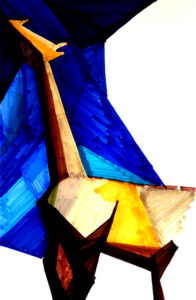
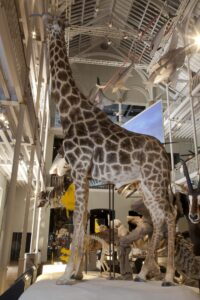
The third picture is a bowl I took at the museum, this bowl represents the friendly relations between the two countries. The object with different textures of material shows into this artwork, it incorporates the traditional Japanese technique of mokume gane which creates patterns resembling wood grain.
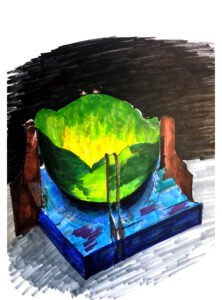
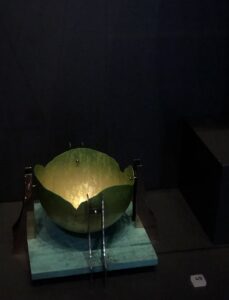
Portrait of Val McDermid II
Portraiture is a very ancient art form dating back 5,000 years to ancient Egypt, where it flourished. Before the invention of photography, a painted, engraved, or drawn portrait was the only way to record someone’s appearance.
However, portraits have always been more than just a record. They were used to show the power, importance, virtue, wealth, taste, learning, or other qualities of the person seated.
Over the years portraiture has been divided into many categories such as historical portraiture, religious portraiture, and celebratory portraiture. Especially A self-portrait does not necessarily have to be representational – and abstract or symbolic depiction by an artist of themselves can also be classed as a self-portrait. A self-portrait can also be in any medium.
The author of the self-portraits is Audrey Grant Scottish who created an interesting process on his sketching. He repeated the sketching process into the same paper several times, from background dyeing to contour drawing by using charcoal.
The technique of charcoal and pencil is used to create this sketching. I painted the background in light grey with 2h pencil, and drew the main part of the sketching by charcoal, adding any details by 2b pencil into the characterization of this portrait of Val McDermid, for instance, the wrinkles on clothes, wrinkles on the face. The final step is to deepen the background colour and use a putty eraser to shape the depth change of background colour.
